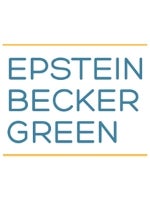In Prince v. Sears Holding Corp., the United States Court of Appeals for the Fourth Circuit (the “Fourth Circuit” or the “court”) sets forth a test that should assist sponsors of employee benefit plans covered by the Employee Retirement Income Security Act of 1974, as amended (“ERISA”) in identifying when participants’ state law claims may be removed to the federal courts. The Fourth Circuit offers a clear explanation of complete preemption under Section 502(a) of ERISA and the test to determine if Section 502(a) completely preempts a state law claim.
Summary of the Facts
This case involves a claim for benefits under an employer-sponsored life insurance plan covered by ERISA. In November 2010, Billy E. Prince (“Prince”) submitted an application to enroll his spouse in the life insurance program sponsored by Sears, his employer. In May 2011, Sears sent an acknowledgement letter to Prince and began withholding premiums from his pay. However, in 2012, Sears advised Prince that his spouse’s coverage never became effective because a completed evidence of insurability questionnaire had not been submitted for her.
Prince’s spouse died in May 2014. When Sears denied his claim for benefits, Prince filed a complaint in the Circuit Court of Marion County, West Virginia. The complaint asserted “constructive fraud/negligent misrepresentation” and “intentional/reckless infliction of emotional distress”.
Sears removed the suit to a United States district court in West Virginia and asked the court to dismiss the complaint, arguing that ERISA completely preempted the state law claims. Prince opposed the motion and moved to remand the case. The district court held that ERISA completely preempted Prince’s claims and then denied Prince’s motion to remand and dismissed the complaint without prejudice. Prince filed an appeal with the Fourth Circuit.
The Court’s Analysis
In its opinion, the Fourth Circuit first examined the removal statute and explained that any civil action brought in a State court of which the U.S. district courts have original jurisdiction may be removed to federal court. The court further explained that when a federal statute completely preempts state law causes of action (referred to as complete preemption), a state law complaint is converted into one stating a federal claim and defendants may remove preempted state law claims to a federal court, regardless of any state-law label that the plaintiff may have used..
The court stated that Section 502(a) of ERISA completely preempts a state law claim when the following three-prong test is met:
-
The plaintiff has standing under Section 502(a) to pursue its claim;
-
The plaintiff’s claim falls within the scope of an ERISA provision that the plaintiff can enforce via Section 502(a); and
-
The claim is not capable of resolution without an interpretation of the contract governed by federal law, i.e., an employee benefit plan covered by ERISA.
The Fourth Circuit found that all prongs of the test for complete preemption were satisfied. With respect to the first prong, Prince conceded that he had standing under Section 502(a), which states that a civil action may be brought by a participant to recover benefits due under a plan, to enforce his rights under the plan or to clarify his rights to future benefits under the plan. The court determined that Prince satisfied the second prong and rejected Prince’s argument that ERISA 502(a) did not apply because his claims relied on actions by Sears prior to the denial of benefits. The court easily concluded that the third prong of the test was satisfied because resolution of Prince’s claim required interpretation of the ERISA life insurance plan maintained by Sears.
Take-Away for Plan Sponsors
The Prince case serves as reminder to plan sponsors that, under the complete preemption doctrine, Section 502(a) of ERISA may allow them to convert claims filed in state court relating to ERISA benefit plans to federal claims and then remove such claims to a federal court. Since a plaintiff cannot avoid removal by seeking money damages, use of the complete preemption doctrine should provide a valuable tool for plan sponsors in responding to claims under their ERISA plans.




 />i
/>i

